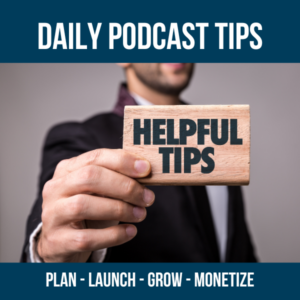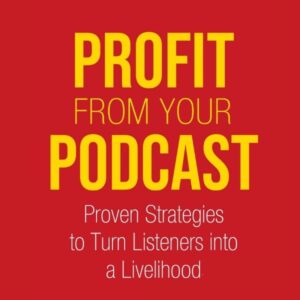Recently I switched the backend of the School of Podcasting from Thinkific to (almost Teachable) to Podia, and I've had a few people ask why.
UPDATE: Why I Left Podia
For the record Podia is a fine platform as long as it does everything you want to do. For me, I occasionally wanted to use tools that required me to place a bit of code into the “header” section of the website and unless I wanted to SIGNIFICANTLY raise my price, I couldn't do it. There were other things I wanted to do, but in the end I found Zenler which does more and is less expensive. Please note there will always be a more expensive and a less expensive option no matter what platform you are currently using. You need to think LONG and HARD when it comes to moving as it takes a lot of time to transition.
Likewise, instead of using Circle, I used Heartbeat community tool.
How To Get on Dave's Bad Side
If you want to see me get angry, it is simple. Just lie to me. When I signed up for Thinkific they said all over their site “unlimited students.” So I signed up. They seemed like a platform focused on delivering a great experience for the student. I was on one of their higher plans to avoid paying more fees and had no issues with Thinkific. Then I decided to start offering free classes. These were very popular and I noticed that my bill went up. Then it went up again, and again. This was due to them charging 10 cents for every student above a threshold. Their plans now included limits on students. I get it, their business has changed.
Now the increases weren't bankrupting me, but I had already upgraded once and was just pissed that I was sold unlimited students, and now I didn't have that. It's a principle thing. They also started adding more and more add-ons, and it started to feel more like WordPress with developers designing more tools (that I wasn't going to use). So I thought about it, I didn't trust them anymore. I decided to move.
My Time With Teachable
For months I redid the videos at the School of Podcasting and I had decided I would use Teachable.com and Circle.so for my community. Both are very impressive. I had planned to be on the $99/month Teachable plan and the $79/month Circle plan (which was about what I was paying for Thinkific, but I would have more flexibility).
I rebuilt the entire School of Podcasting and I started playing with Circle. This was also the time I found Volley (now out of business I use Clarifty Flow) which is another community tool. I attempted to get the members of the School of Podcasting Private Facebook group to use Volley. Some are, but many are not. It dawned on me that I might end up paying $80/month for Circle only to have my members ignore it.
I also was having a hard time getting teachable to look the way I wanted it to. Their support was very responsive and helpful, but on more than one occasion I was told, “You can hire one of their experts to customize your site”. I thought what I was asking for wasn't that special. I should've been able to change some colors that I couldn't.

I hated that light blue line.
Teachable has a free account and you can play with it until you like it, and then launch.
The part that made me scratch my head was when I went to import my current students into the new platform, Teachable wanted me to upgrade to their $249 plan or higher (I was on their $99/month plan). Here again, I just thought I would be able to import a CSV file and flick the switch. The fact that I couldn't turn into a deal breaker. I did have the alternative of adding them in one by one.
While they also have an affiliate program, it seemed like a hassle to run the affiliate yourself (they can help you, but – understandably – want a piece of the action).
Looking back I did come up with a way to have my students migrate themselves
Enter Podia
Podia loves to give you what you want and can keep things simple. Their site builder is powerful yet simple. Their course builder let me recreate my whole site in a very small amount of time.
After seeing how my audience was clinging to Facebook, Podia has a built-in community. I thought, “Why try to create a community if they aren't going to use it?” Sure, Podia's community doesn't have the option of a circle community, but in regards to being better than Facebook, it is so much better, and the whole Podia site is very mobile-friendly.
I've also already created some digital downloads, and I am looking into selling some webinars in the future. Podia integrates with a lot of products and one of those is Convertkit. While in theory, I could cancel my Convertkit account (and use Podia to manage my list -saving me $49/month) I can tag a user when they sign up which makes it easy to filter when making lists.
It also makes it easy to integrate with Google Analytics, Facebook Pixels, and more for monitoring traffic and results.
I like Podia's checkout flow, and don't have to worry about pop-up blockers adding hurdles to the checkout process. I love that my students are taken to the community when they login (which boosts engagement).
Podia even has a built-in chat system which makes it easy to support your students.
They have a built-in affiliate program and I can see who is sending the most traffic.
If you are a person who is looking for a “No coding” solution then Podia was designed for you. (more on that in a second).
The Podia admin dashboard is again, simple and powerful. I love that I can see total sales, but also my monthly recurring revenue (MRR) or as I call the “How am I doing?” box.
With Podia I chose their Shaker plan $89/month. There are no additional fees. If could cancel my email list (Currently $49/month), any tool I use for landing pages, and their support has been AMAZING.
How I Migrated My Students
Moving from one platform to another is never easy. You need to cancel their old subscription and have them start a new one. How I handled this was to give a decent discount via coupon. All of the above systems have coupons. They make it so you can create a link that has the coupon built-in, Podia makes this super simple, and so I have people sign up using a coupon, and then I would manually login to stripe/PayPal and cancel their original subscription (which, in theory, I could've done with Teachable).
To see this in action go to www.schoolofpodcasting.com/listener
Every System Has Its Flaws
Thinkific has student limits. Their technology appears to be limitless, so for those who don't mind getting their geek on, you won't hit any walls trying to do something (you'll just pay more if you get popular).
Teachable has a lot of flexibility (except in choosing colors – unless you want to hire an expert). For example, you can add scripts in the header of your teachable site (so for all you Appsummo fans, yes you can add those tools).
Both of the above tools have fees they charge based on the plans. Podia does not charge additional fees.
Podia's weakness is for those who want to get geekier. For example, that script you bought at appsumo that needs you to enter some text in the header section? That is not an option. If I want to use my own chat from tawk.io I would need to upgrade to a plan that would double my monthly cost (so instead I just added a link to the navigation bar- again Podia is flexible).
Decide What Features You Need and Make a Decision
The step that truly helped me was when I decided I just needed a basic community tool. Yes, Circle is cool, but my community didn't need it. Once I made the decision and identified what I was going to build, the building part was easy, simple, straight, and to the point. For me that was Podia.
Their team continues to update the system and add new features. Their support is super responsive and is listening to our suggestions (and I trust them to add anything I'm missing.
This article may contain affiliate links where I earn a commission if you purchase their product.





